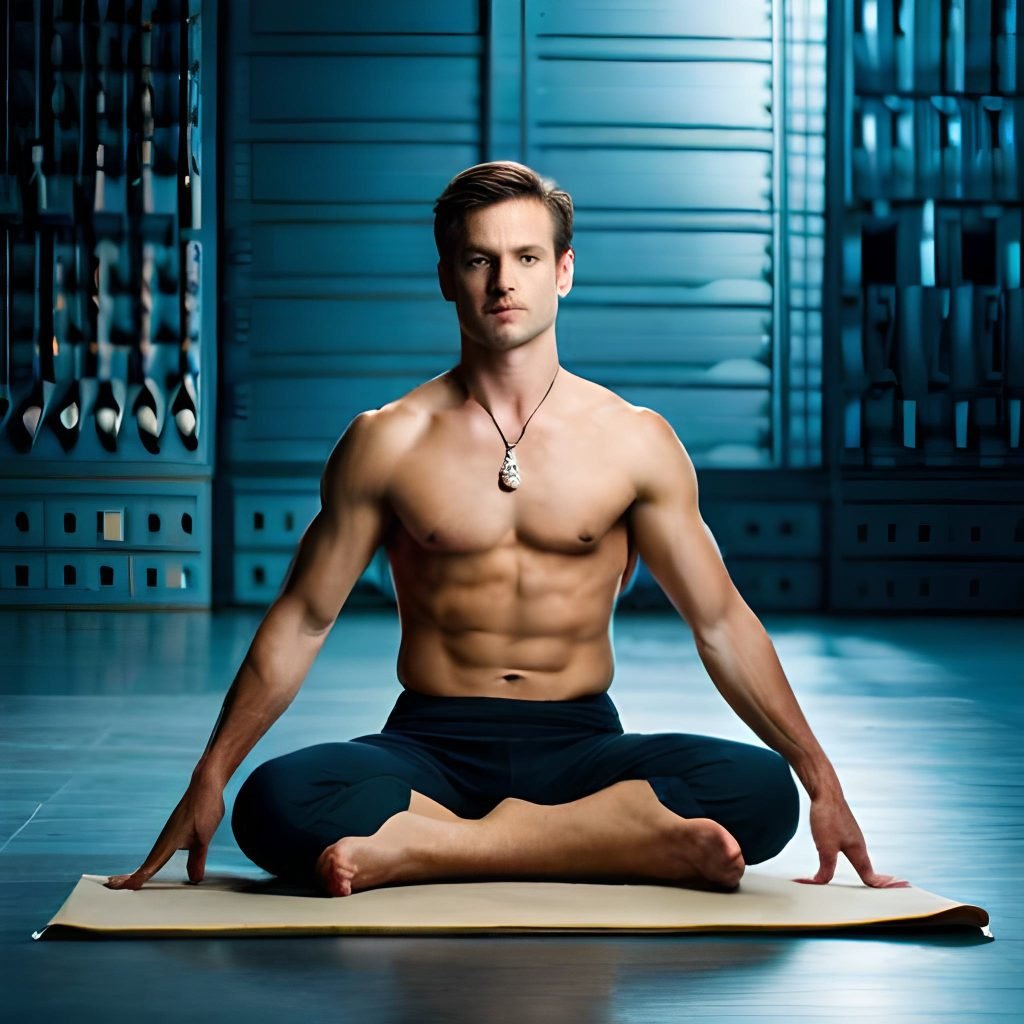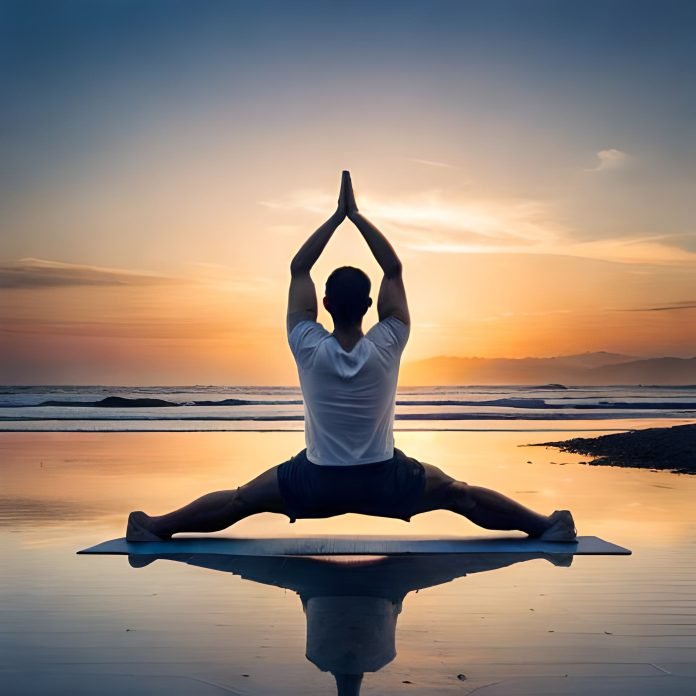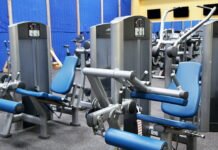Last Updated on March 12, 2024 by admin
Are you feeling anxious, stressed, or overwhelmed? You’re not alone. Anxiety is a common issue that affects millions of people worldwide. Fortunately, there are various ways to relieve anxiety, and one of them is through yoga. This comprehensive guide will explore different yoga routines to help you find inner calm and reduce anxiety.
Table of Contents
Understanding Anxiety
Before we dive into yoga routines, it’s essential to understand what anxiety is and how it affects the body. Anxiety is a natural response to stress, but it can interfere with daily life when it becomes excessive or irrational. Common symptoms of anxiety include:
- Excessive worry or fear
- Restlessness or irritability
- Muscle tension
- Fatigue
- Trouble sleeping
If you’re experiencing any of these symptoms, seeking professional help is essential. While yoga can help alleviate anxiety, it should not replace medical treatment.
The Benefits of Yoga for Anxiety Relief
Yoga is a mind-body practice that combines physical postures, breathing techniques, and meditation. It has been shown to have numerous benefits for anxiety relief, including:
- Reducing stress: Yoga helps to activate the parasympathetic nervous system, which promotes relaxation and reduces stress.
- Enhancing mood: Practicing yoga can increase levels of GABA, a neurotransmitter that helps regulate mood and anxiety.
- Improving sleep: Yoga has been shown to improve sleep quality and quantity, positively impacting anxiety levels.
- Boosting self-esteem: Regular yoga practice can help improve self-esteem and self-confidence, reducing anxiety.
Yoga Routines for Anxiety Relief
Now that we’ve explored the benefits of yoga for anxiety relief, let’s look at some specific routines you can try at home.
1. Gentle Yoga Flow
This routine is perfect for beginners or anyone looking for gentle practice. It consists of slow, flowing movements that help release tension in the body and calm the mind. Here’s how to do it:
- Start in a seated position with your legs crossed.
- Take a deep breath and raise your arms overhead.
- Exhale and slowly fold forward, reaching your hands towards your feet.
- Inhale and slowly roll up to a seated position, reaching your arms overhead.
- Repeat this flow for five to ten minutes, focusing on your breath and gentle movements.
2. Restorative Yoga
Restorative yoga is a deeply relaxing practice that involves holding poses for an extended period. It helps to activate the parasympathetic nervous system and promote deep relaxation. Here’s how to do it:
- Start by lying on your back with your knees bent and your feet on the ground.
- Place a bolster or pillow under your knees and a blanket over your body.
- Close your eyes and focus on your breath, inhaling for four counts and exhaling for eight.
- Stay in this position for ten to twenty minutes, allowing your body to relax fully.
3. Yoga Nidra
Yoga Nidra, also known as yogic sleep, is a guided meditation that helps you enter a state of deep relaxation. It’s an excellent practice for reducing anxiety and improving sleep quality. Here’s how to do it:
- Lie down on your back in a comfortable position.
- Close your eyes and focus on your breath, inhaling and exhaling deeply.
- Follow a guided Yoga Nidra meditation, which will lead you through different stages of relaxation and visualization.
4. Pranayama
Pranayama, or breath control, is a powerful tool for reducing anxiety and calming the mind. Here are a few pranayama techniques you can try:
- Equal Breathing: Inhale for a count of four, and then exhale for a count of four. Repeat for several minutes, gradually increasing the count.
- Alternate Nostril Breathing: Close your right nostril with your thumb and inhale through your left nostril for a count of four. Then, close your left nostril with your ring finger, release your thumb, and exhale through your right nostril for a count of four. Repeat, alternating nostrils for several minutes.
- Kapalbhati Pranayama: Sit comfortably with your hands on your knees. Inhale deeply, then exhale sharply and quickly by contracting your abdominal muscles. Repeat for several rounds, gradually increasing the speed.
5. Sun Salutation
Sun Salutation is a series of yoga poses that help improve flexibility, balance, and focus. It’s also an excellent practice for reducing anxiety and stress. Here’s how to do it:
- Start in Mountain Pose, standing tall with your feet together and your hands at your sides.
- Inhale and raise your arms overhead, then exhale and fold forward, reaching your hands towards the ground.
- Inhale and lift halfway, placing your hands on your shins.
- Exhale and step back into a plank position, then lower down into Chaturanga.
- Inhale and lift up into Upward Facing Dog, then exhale and push back into Downward Facing Dog.
- Hold this position for several breaths, then step or jump forward to the top of your mat.
- Inhale and lift halfway, then exhale and fold forward.
- Inhale and rise up to Mountain Pose, then exhale and bring your hands to your heart.
Repeat this flow for several rounds, focusing on your breath and the gentle movements.
Tips for Practicing Yoga for Anxiety Relief

While yoga can be a powerful tool for anxiety relief, it’s important to practice safely and mindfully. Here are a few tips to keep in mind:
- Listen to your body: Pay attention to how you feel during each pose and adjust accordingly. If something doesn’t feel right, don’t push yourself.
- Focus on your breath: Your breath is a powerful tool for calming the mind and reducing anxiety. Try to maintain a steady, even breath throughout your practice.
- Create a calming environment: Set up your space with soothing music, candles, or other calming elements to enhance your practice.
- Practice regularly: Consistency is key when it comes to yoga. Try to practice at least a few times weekly to experience the full benefits.
Conclusion
Anxiety can be a challenging issue to deal with, but yoga can provide a powerful tool for finding inner calm and reducing stress. Whether you’re a beginner or an experienced yogi, there are many routines you can try at home. Practicing mindfully and regularly lets you find peace and relaxation daily.
FAQs
While yoga can be a powerful tool for anxiety relief, it should not replace medical treatment. If you’re experiencing severe anxiety, seeking professional help is essential.
Try to practice yoga at least a few times per week to experience the full benefits. However, even a short daily practice can be helpful.
Gentle poses such as Child’s Pose, Legs Up the Wall, and Forward Fold can help reduce anxiety.
Yes, beginners can do pranayama techniques, but it’s essential to start slowly and gradually increase
the practice’s duration and intensity.
Yes, practicing yoga in a group setting can be a great way to reduce anxiety and connect with others seeking inner peace and relaxation.
Apart from that, if you want to know about Top Ten Tips of Facial Care for Men, please visit our health page.






















